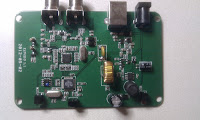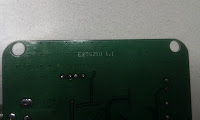Prologue
It has long been in mind of mine to start share some photos and analysis from DVB device internals. Actually, I already have done that few times on
my Google+ profile, but lets continue here as it is easier to tell what you should see on the picture.
First device is cheap USB satellite receiver, which I bought the reason I can convert its Linux driver to the DVB USB v2 I recently implemented.
DM04 USB 2.0 Satellite TV Box
 |
| DM04 USB 2.0 Satellite TV Box |
Key components:
Leaguer MicroElectronics LME2510C
Montage Technology M88RS2000
Keywords: DM04 USB 2.0 Satellite TV Box, Leaguer MicroElectronics LME2510C, Montage Technology M88RS2000, DVB-S, DisEqC1.2, dvb_usb_lmedm04, EzTV210 1.1, FORWARDVIDEO
Leaguer MicroElectronics LME2510C
 |
| Leaguer MicroElectronics LME2510C |
LME2510C seems to be rather standard digital television USB interface. It contains some extra features, like remote controller and PID filtering. Chip seems to need also firmware which is downloaded by the driver.
There is small 8 pin IC near LME2510C, but unfortunately markings are overwritten with blue paint. I can see still numbers 24, likely serial eeprom like 24C02. Usually that kind of eeprom is for storing desired USB ID. When bridge powers-up, it firsts downloads USB ID from the eeprom and
connects to the USB bus using that ID.
Black box right side of LME2510C is IR -receiver for remote controller. Metal box, 12.000 MHz crystal, is LME2510C clock source.
Long wires, which goes top-left direction, are USB Rx/Tx to the USB -connector.
There is clearly visible 8 lines to the other chip on left side. That other chip is M88RS2000. As there is 8 similar lines between demodulator and USB -interface like that, it means most likely parallel transport stream bus. It is bus where picture stream bits are travelling from demodulator to the USB -interface.
Linux driver:
name: dvb_usb_lmedm04
author: Malcolm Priestley <tvboxspy@gmail.com>
Montage Technology M88RS2000
 |
| Montage Technology M88RS2000 |
M88RS2000 is quite highly integrated satellite receiver. It integrates LNB controller, RF-tuner and demodulator to one package. Quite often those are all sold as a separate chips. Metal box is 27.000 MHz clock source. Antenna connectors are routed to the that chip too since it includes RF-tuner. M88RS2000 is rather legacy design as it supports only old DVB-S standard, newer DVB-S2 standard is very common nowadays. New version of that chip, which supports DVB-S2 too, is available.
Linux driver:
name: m88rs2000
author: Malcolm Priestley tvboxspy@gmail.com
USB interface
IDLE current drain without driver: 64mA (66mA without external PSU)
Pictures





































































